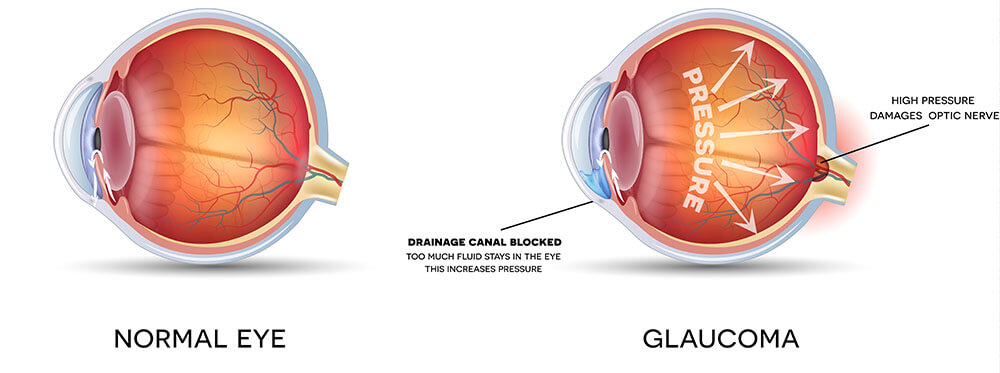Prado Vision Center is proud to provide state-of-the-art treatment of glaucoma for Tampa Bay residents. Glaucoma is a very common disease that afflicts more that 2 million Americans. It is one of the leading causes of preventable blindness. Many patients do not know they have glaucoma because in the early stages, symptoms of pain or loss of vision are not present.

What it’s like to see with Glaucoma
Glaucoma can occur in people of all ages and of any race. However, there are several factors that increase the likelihood of developing glaucoma. If you suffer from diabetes, are of African-American descent, are nearsighted, over the age of 35, or if someone in your family has glaucoma, you are more likely to develop glaucoma. Also, as you age, your risk of developing glaucoma increases. For this reason, we recommend everyone over 40 receive an annual dilated eye exam.
While there are several types of glaucoma, the most common type is open-angle glaucoma. Internal pressure within the eye is maintained by the constant production of a fluid called aqueous humor. As this fluid is produced, it is also continuously drained through a specialized system called the trabecular meshwork. In open-angle glaucoma, this drainage canal does not function properly, pressure builds inside the eye, and the optic nerve is damaged. If the pressure remains elevated for a long period of time, irreversible vision loss occurs. In the early stages of glaucoma, only side vision is affected, and victims may be totally unaware that they are losing sight. If left untreated, glaucoma will eventually cause the complete loss of vision.
Glaucoma must be detected and treated as early as possible to avoid vision loss. In most cases, vision can be preserved if treatment is sought in the early stages of glaucoma. At Tampa, Florida’s Prado Vision Center, we recommend a yearly evaluation with our glaucoma specialists for the presence of glaucoma in people over the age of 40.

Several specialized glaucoma tests will be performed during your evaluation. These tests can detect even the earliest signs of glaucoma:
- Tonometry – measures intraocular pressure.
- Ophthalmoscopy through a dilated pupil – visual inspection of the optic nerve to detect abnormalities related to glaucoma.
- Perimetry – tests for any specific pattern of peripheral vision loss characteristic to glaucoma.
- Disc photography – documents optic nerve abnormalities for future comparison.
- Nerve fiber layer analysis – measures the absence of nerve fibers and is very sensitive for detecting early glaucoma.
Treatment modalities revolve around lowering the eye pressure. These include medicines in the form of eye drops, laser surgery to open the drainage system, and filtration surgery to create a new drainage pathway.
For testing or treatment of glaucoma in Tampa Bay, Florida, contact the specialists at Prado Vision. We look forward to providing state-of-art testing and treatment for glaucoma patients. Remember, early detection is vital to the treatment of glaucoma. Contact us today for a glaucoma evaluation!

